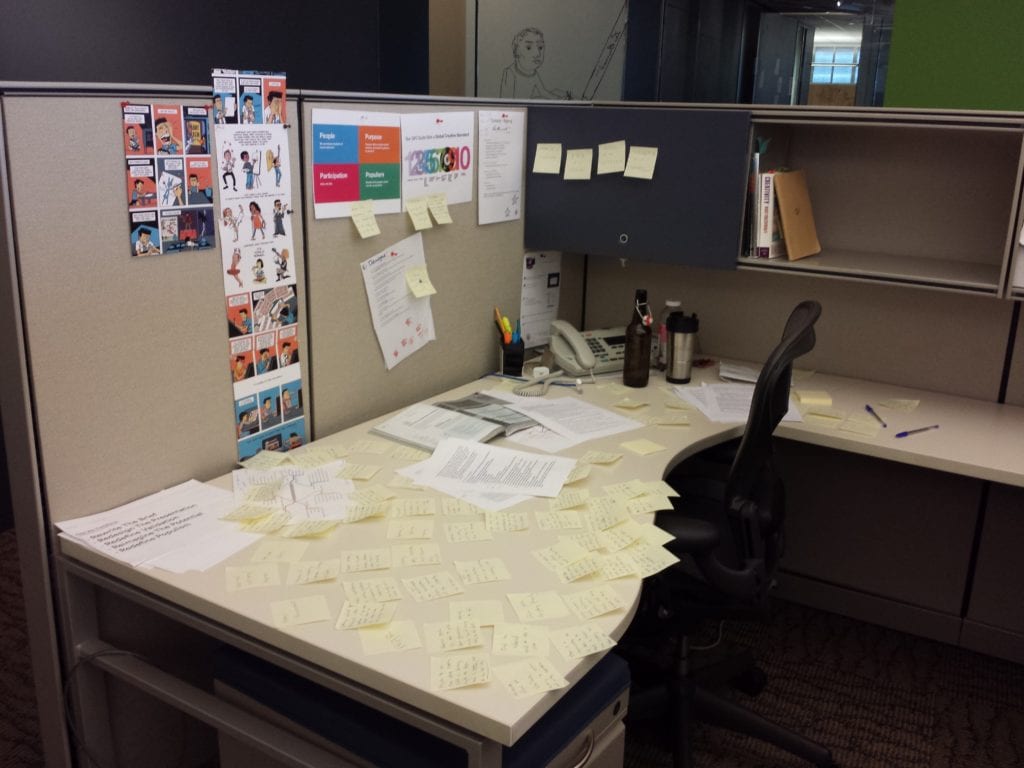August 04, 2014
Leo Burnett + Experience Institute: Building a Culture of Creativity
I am working with Leo Burnett this summer on the innovation squad with with Mark, Chief Innovation Officer and Carey, SVP Strategic Partnerships. The project is about exploring collaboration and innovation, and working toward building a company culture of creativity.
Leo Burnett is a 78 year-old award winning agency employing 1900 people globally. They are experts at crafting brand stories that connect with people. Leo Burnett is known for campaigns like Earth Hour, Tony the Tiger, Marlboro Man, Coca-Cola etc.
As consumer sentiments continue to shift at an increasing rate, company culture is challenged to change even more rapidly. In order to stay relevant in the hearts and minds of people, company cultures have a strategic imperative to evolve.
My first few weeks working on this project is about taking a step back and looking at the 30,000 foot view. My assignment was 'get lost in the world of creativity, collaboration and innovation.' Creativity is the ability to connect the seemingly disconnected in a novel way. Collaboration is working together towards a common goal. Innovation happens when you of practice creativity and collaboration persistently. Luck helps too. A few surrounding questions for this endeavor are:
- What does a culture of collaboration and creativity look like for a company?
- How can we learn from innovators who practice creativity and collaboration effectively in their companies?
- How do we pilot initiatives that have the potential to take root throughout the entire company?
- Is creativity a basic human need?

I did a lot of research, scouring the internet, reading books for varying and conflicting perspectives. I synthesized 22 pages of notes into hypotheses that aide in contextualizing the whole project. I formed many statements, a few of them follow:
Environment
Effective creativity and collaboration is dependent on the environment in which the collaboration is taking place. Contributors to environment include creative office space design and fulfillment of vital needs (i.e. food, exercise, sleep)
Modeling
Executive leadership teams must model collaboration and creativity in a visible and easily perceivable way for employees. Employees believing their leaders are collaborative will drive them to act similarly.
Culture
The culture of an organization is what drives collaborative behavior both within the company and between companies. Habits, behaviors and norms that foster a creative culture will enhance collaboration.
The most resonant hypothesis for me surrounds fear. People resign themselves to believing they're not creative or collaborative mirroring the culture of our communities. Why do we do this? We're scared of not fitting in, or maybe scared we might fail or aren't good enough. Maybe we're scared of what other people will think. We start repeating this fear-based story to ourselves and it perpetuates into a vicious cycle. I used to be scared to speak, but now I get excited about standing up and using my voice because I took a series of steps to temper this fear. David Kelley, founder of IDEO, Stanford d.school and a great friend of Experience Institute posits there are four types of fear -
- Fear of the Messy Unknown
- Fear of Judgement
- Fear of Failure
- Fear of Losing Control
Imagine what your workplace would be like if you were expected to fail because that's just part of the process. Would you still be scared to get it 'wrong'?

Photo Credit: Kevin Von Qualen
Curiously enough, this research process has taught me a lot about my own capacity for creativity and collaboration. I've been reflecting on my learning journey this year and I think I've developed quite a bit of creative confidence myself. I knew something transformational had been happening, now I've got a word for it.
Research is great for getting an overview and some context into an opportunity. Now its time for the real empathy work of talking to people. In the next phase of this project, I will be interviewing folks from across the company in different departments and seniority levels. I hope to gain a deep qualitative understanding of the behaviors, emotions and lives of the people at Leo Burnett. This will launch me into the next phase, defining and ideation.
What factors enable you to hit your creative and collaborative zeal?
The Spark You’ve Been Looking For
Visit our store to find award-winning education tools used by individuals and teams around the world.



